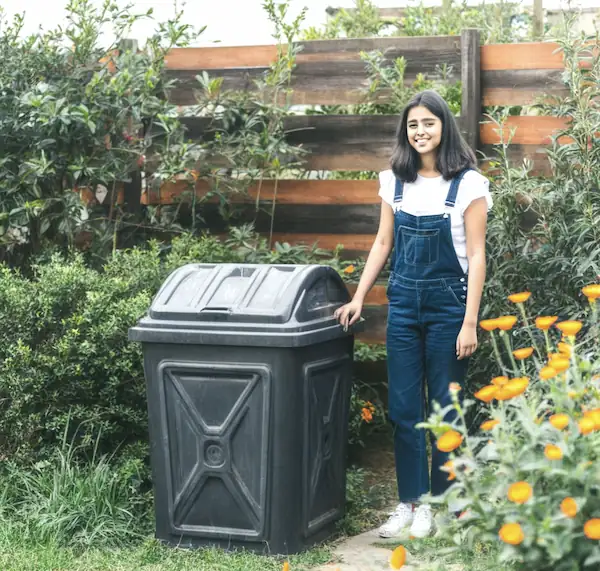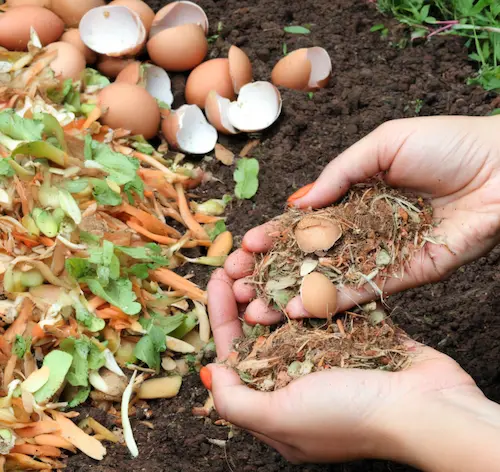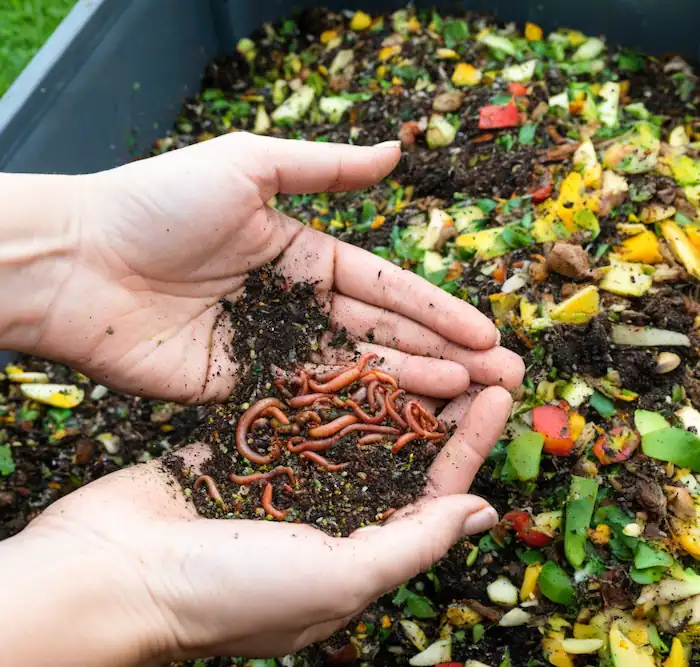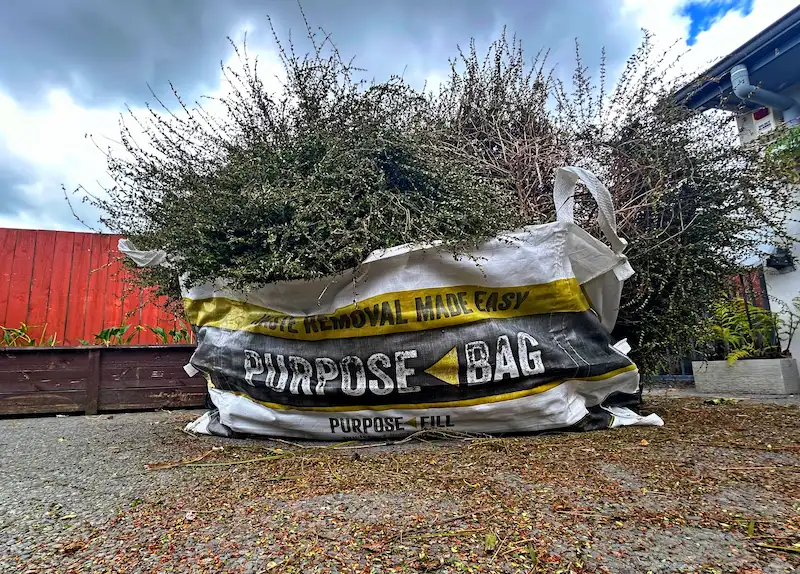How to build a DIY compost bin and what to put in It for a greener New Zealand
As New Zealand’s green waste grows, it’s important for households to find sustainable ways to handle food and garden scraps. Composting is a simple, effective solution that reduces landfill waste, lowers emissions, and creates nutrient-rich soil for gardens. In this guide, Purpose Fill walks you through building a DIY compost bin and making the most of organic waste.
Why start composting?
Composting transforms food and yard waste into a resource that enriches soil and boosts plant health. The Ministry for the Environment reports that food waste contributes to greenhouse gas emissions, but composting can divert these materials from landfills. In Hamilton, initiatives like kerbside food scrap collection are helping reduce emissions. Building your own compost bin is a great way to join this movement, making a positive impact on both the environment and your backyard.

How to make a DIY compost bin
Creating a compost bin is simple and inexpensive. Here’s how you can make one with common materials:
Materials needed
- Wooden pallets or recycled wood
- Screws or zip ties
- A drill (if using screws)
- A tarp or lid to cover
Step-by-step instructions
- Choose a location: Select a spot with good drainage and partial sunlight, ideally near your garden for easy access.
- Construct the bin: Use wooden pallets or wood planks to create a three-sided box. Secure them with screws or zip ties, leaving one side open or with a removable panel for easy access.
- Add a cover: Place a tarp or lid over the bin to maintain moisture while allowing airflow.
By keeping this setup simple, you’ll have a functional compost bin that encourages natural decomposition.
What to put in your compost bin
A balanced compost mix needs two types of materials: “greens” and “browns.” These provide nitrogen and carbon, respectively, helping maintain the microbial life essential for decomposition.
Green materials (nitrogen-rich)
Include materials like:
- Vegetable and fruit scraps
- Grass clippings
- Coffee grounds
- Tea bags
These ingredients add nitrogen, a crucial nutrient for the composting process. Hamilton City Council’s “Tronpost” compost includes similar materials collected from residents, showing how everyday food scraps can become valuable resources.
Brown materials (carbon-rich)
Add items such as:
- Dry leaves
- Newspaper (shredded)
- Cardboard
- Wood chips
Browns provide carbon, which gives compost structure and reduces odor. Alternate layers of browns and greens in your compost bin to create a balanced, oxygen-rich environment.
If you finding it hard to compost of all your green or garden waste feel free to have a look here for some solution ideas of getting rid of your garden waste quickly with a flexible skip purpose bag.

How a worm farm can enhance your composting efforts at home
Composting at home is already a fantastic way to reduce landfill waste, lower emissions, and create nutrient-rich soil for your garden. But did you know that adding a worm farm to your composting setup can take things to the next level? Worm farming, also known as vermicomposting, is an efficient and sustainable method that complements traditional composting by processing food scraps into a highly valuable fertilizer: worm castings.
what is a worm farm?
A worm farm is a container system that houses composting worms, usually red wigglers or tiger worms, which consume organic waste and excrete nutrient-dense castings. These castings are often referred to as “black gold” for gardens because of their exceptional ability to enrich soil.
Unlike standard compost bins, worm farms work best with specific food scraps and thrive indoors or in sheltered outdoor areas, making them a versatile option for households with limited space or cooler climates.
benefits of adding a worm farm to your composting routine
- accelerated composting
worms break down organic waste faster than traditional composting methods. This means you’ll have nutrient-rich compost ready for your garden in a fraction of the time. - high-quality fertilizer
worm castings are more concentrated in essential nutrients than regular compost. They also contain beneficial microbes that improve soil health and support plant growth. - space-saving solution
worm farms are compact and can be set up in small spaces like a balcony, garage, or kitchen corner. This makes them ideal for urban households or anyone with limited outdoor space. - reduces odors
properly maintained worm farms emit very little odor, making them an excellent option for managing food scraps indoors.
how to set up a worm farm
Setting up a worm farm is simple and requires minimal investment. Here’s how you can start:
materials needed
- a worm farm kit or stackable plastic bins
- bedding material (shredded newspaper, coconut coir, or aged compost)
- composting worms (available from garden centers or online)
step-by-step instructions
- assemble the farm
if using a kit, follow the manufacturer’s instructions. For DIY setups, drill small drainage and ventilation holes in your bins. - prepare the bedding
place a layer of damp bedding material in the bottom of the bin. - add worms
introduce your worms to their new home and let them settle in for a day before adding food scraps. - feed the worms
start with small amounts of kitchen scraps like fruit peels, vegetable scraps, and coffee grounds. Avoid citrus, onion, garlic, and meat as they can harm the worms or cause odors. - maintain the farm
keep the worm farm in a cool, shaded area and ensure the bedding remains damp. Feed the worms weekly and harvest castings every 2-3 months.

Maintaining your compost bin
To help your compost break down efficiently, follow these maintenance tips:
- Turn Regularly: Use a pitchfork or shovel to mix the compost every 1-2 weeks. This aerates the pile and speeds up decomposition.
- Monitor Moisture: Compost should be as damp as a wrung-out sponge. Add water if it’s dry or more browns if it’s too wet.
- Patience is Key: Composting can take anywhere from 3 to 12 months, depending on climate and materials. Proper care will yield nutrient-rich compost for your plants.
Benefits of composting with Purpose Fill
By composting at home or using Purpose Fill’s green waste services, you support New Zealand’s waste reduction goals. Purpose Fill is dedicated to reducing organic waste going to landfills, in line with national efforts to lower emissions. Initiatives like Hamilton’s food waste program illustrate how community-driven composting can transform waste into resources, enriching gardens and local projects like the Fairfield Project.
Why efficient green waste disposal matters
Properly managing green waste is crucial for a cleaner environment and a sustainable future. Efficient green waste disposal, like composting, helps divert organic matter from landfills, significantly reducing greenhouse gas emissions. When organic waste breaks down in landfills, it releases methane, a potent greenhouse gas. Composting, by contrast, transforms this waste into valuable nutrients for soil, making it a key part of Purpose Fill’s mission to support sustainable waste solutions.
In New Zealand, food and garden waste account for a significant portion of landfill waste. By managing this through composting or green waste services, households and businesses can help create a closed-loop system. This system recycles nutrients back into the soil, benefiting agriculture and gardens while reducing environmental impact.
For those who want to learn more about this topic, we have a comprehensive article that delves deeper into the subject, providing all the details you need to know.
Composting beyond your backyard
If home composting isn’t feasible, consider Purpose Fill’s green waste solutions for responsible disposal. In some areas, local councils provide food waste collection, with composted materials supporting community gardening efforts. These services align with New Zealand’s goal of creating a zero-waste culture, where food scraps and garden waste are repurposed rather than discarded.
Final Tips for composting success
- Avoid putting meat, dairy, or oils in your compost bin, as these can attract pests.
- Chop larger pieces of waste for quicker decomposition.
- Cover your compost with a layer of browns after adding greens to minimize odors and discourage flies.
Join the composting movement today
By composting your food and garden scraps, you can reduce landfill waste and contribute to a healthier environment. Purpose Fill encourages New Zealanders to compost at home or use our green waste services, helping to transform waste into soil-enriching resources. Let’s work together to make green waste disposal a sustainable habit across the country.
For more information on community composting initiatives, visit the Ministry for the Environment’s case study on Hamilton City Council’s food waste reduction goals here.

We’re the best darn team in the Waikato ( 605+ google reviews ) and we’re always happy to help you out. So, if you have any questions, just give us a call at 0800 50 10 20 or shoot us an email. We’re here for you!
